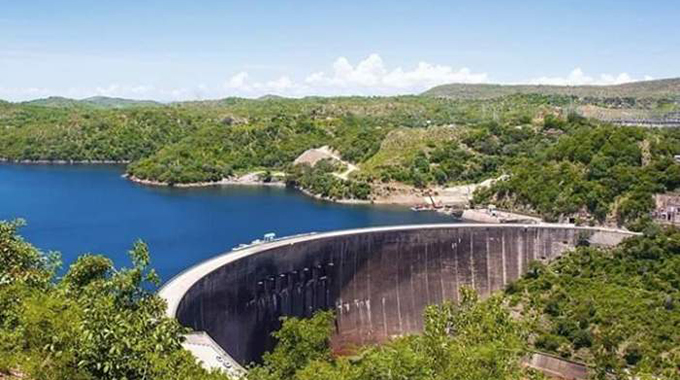
Walter Nyamukondiwa-Kariba Bureau
WATER levels in Lake Kariba are rising steadily as the second peak arrives from the Upper Zambezi catchment and the live storage, the upper levels of the lake between the inlets to the two power stations and the full mark, is now half full, the highest for three years.
The bulk of the water in Lake Kariba comes from rainfall and run off in south-eastern Angola and north-western Zambia with only a small contribution from north western Zimbabwe and central Zambia. The earlier pulse in flows is largely the result of these small contributions plus the initial flows from the Barotse flood plains, and what is now being seen is largely the Angolan water.
But despite the excellent flows now being seen following good rains across the entire catchment, no one is expecting that the floodgates at Kariba Dam will be opened. Kariba South and Kariba North hydro-electric stations between them, can use the full flow of the Zambezi even in the best year, following extensions, and if water-flow rations are raised, the stations will simply use more generators more often, as Kariba power is cheap and can replace more expensive thermal power or can be exported into the region.
The latest readings from the Zambezi River Authority (ZRA) which manages Kariba Dam and the Zambezi River flows, showed that the lake had risen by Thursday last week to 7,66 metres above the minimum level needed to operate the two power stations, with the lake holding 52,04 percent of its live capacity.
On the same day last year the level was just 5,46m (or 35,25 percent of live capacity). The 5 500 square kilometre area of the lake means that a 2m difference in depth translates into more than 10 cubic kilometres of water. The update from ZRA said flows at gauging stations in the upper Zambezi River including Chavuma and Victoria Falls show a steady decline signalling the end of peak flows, but the low flow regime is only expected in June. The Zambezi River never runs dry, but during the lower flow periods the ZRA has to allow the stations to use stored water, so levels start falling.
ZRA chief executive Engineer Munyaradzi Munodawafa said upgraded power generation capacity by Zimbabwe and Zambia has provided another flood mitigation option.
“Hopefully, as an authority we do not envisage that time when there will be opening of the floodgates. The two utilities Zesa and Zesco did an expansion of the Kariba capacity. Unbeknown to them, they were actually helping us in managing the floods.”
The two utilities now have a combined generation capacity of 2 130 megawatts from 1 200MW and opening up all the turbines would be enough to discharge large volumes of water and avert flooding.
“Going on full load by the utilities is enough to control flooding without having to open the floodgates. We want to thank the utilities and the two Governments of Zambia and Zimbabwe for the expansion of capacity,” said Eng Munodawafa.
For some years, the entire flow downstream of the dam has been water discharged from the two stations, and that is now likely to be the position for the rest of history.
